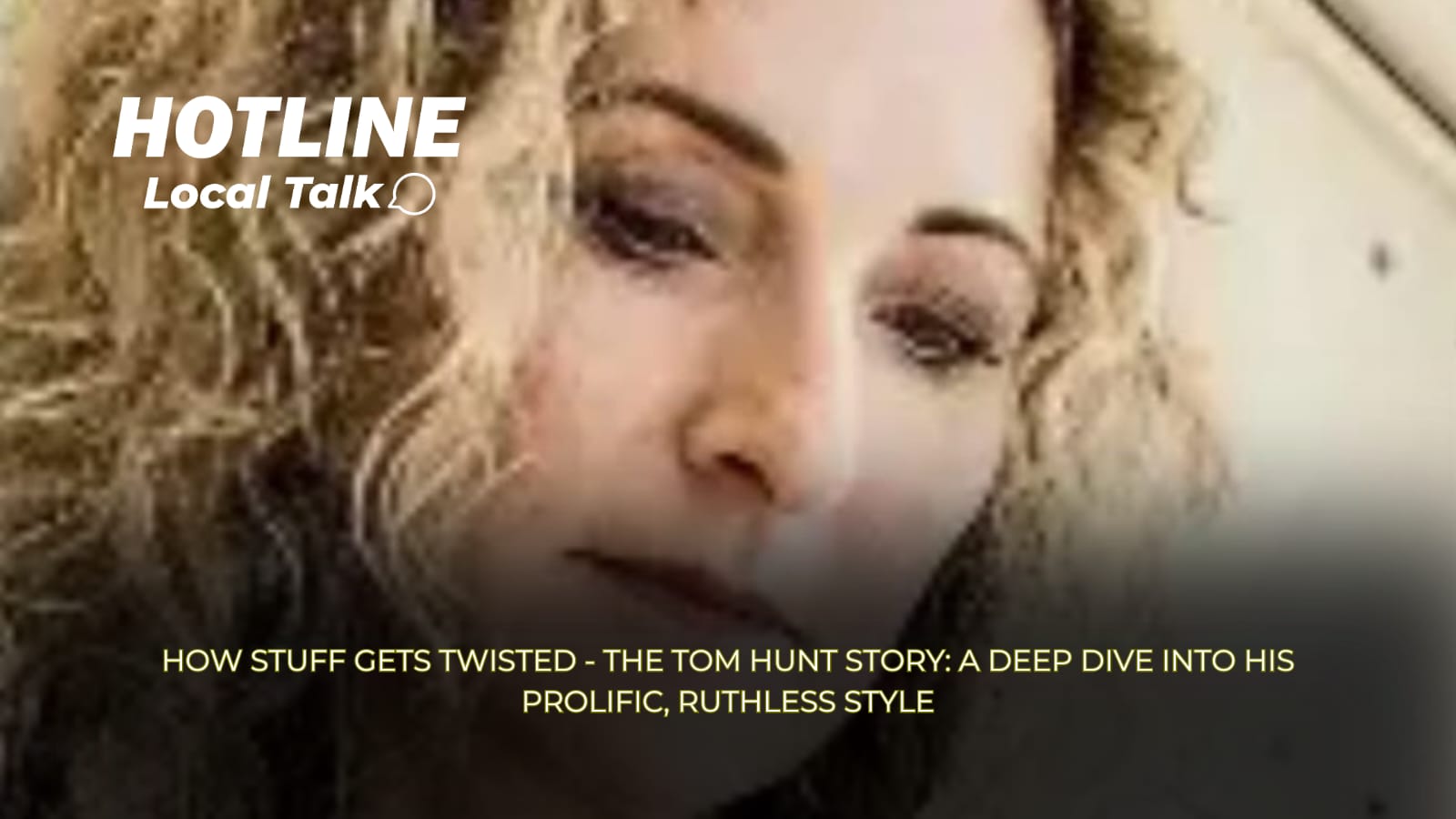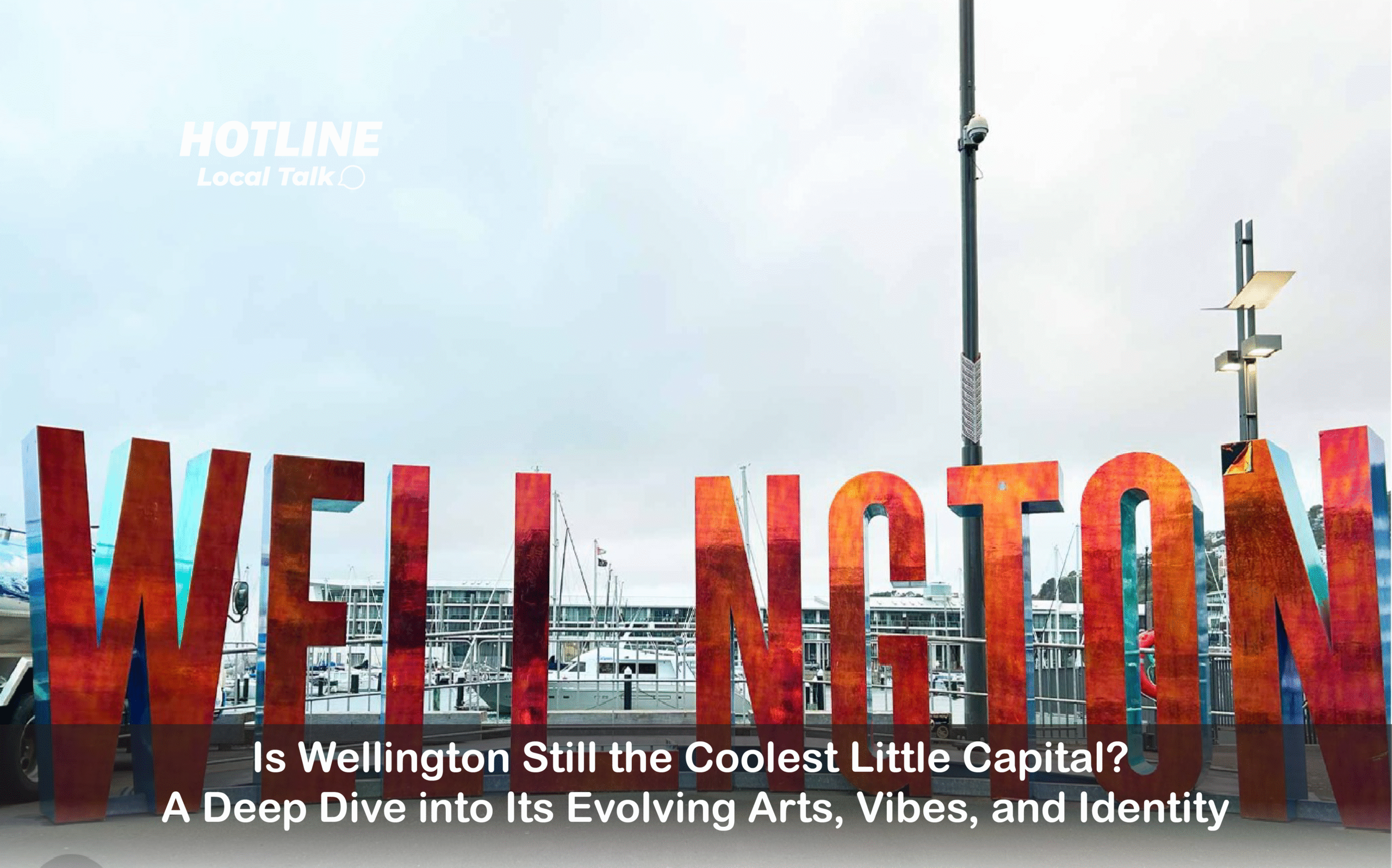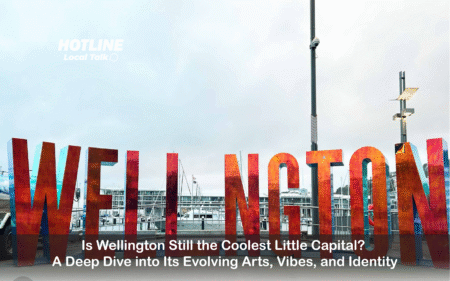Thorndon used to be the beating heart of Wellington. It’s one of the oldest suburbs in New Zealand, sitting flat and cosy at the north end of the city’s busy centre. Once, it was full of posh houses, bustling shops, and important people—politicians, writers, and bigwigs all called it home. But now, parts of Thorndon feel like a ghost town. Empty buildings, quiet streets, and a sense that life has moved on. At One Network Wellington Live, we’ve been walking through Thorndon, asking: what happened to this place? Can’t it spring back to its old glory? Let’s look at the story and figure out if there’s hope.
Thorndon’s tale starts way back. Before it was Thorndon, Māori called it Haukawakawa—a flat spot by the harbour, good for living. In 1824, Pipitea Pā popped up at its south end, a strong village for Te Āti Awa people. Then, in 1840, European settlers rolled in with the New Zealand Company. They named it Thorndon after some lord’s estate in England and built houses next to the Māori kāinga. It grew fast—big homes for rich families, little cottages for workers, all mixed together. By 1865, Wellington became the capital, and Thorndon got even busier. Parliament set up shop here, and grand places like Government House sprang up. It was the fancy end of town—people called it the “court end” in the 1840s.
Back then, Thorndon was alive. Molesworth Street had shops and services—bakers, butchers, tailors—while Tinakori Road had homes with gardens and chatter. The harbour was close, and the flat land made it easy to get around. Katherine Mansfield, the famous writer, was born here in 1888, and her stories—like “The Garden Party”—paint a picture of Thorndon’s busy, classy days. Embassies and big schools—like Wellington Girls’ College—added to the buzz. Thorndon Quay was a main road, packed with carts and later cars, linking the city to the north. It wasn’t just houses—Thorndon had life, noise, and people everywhere.
So what went wrong? The 1960s changed everything. The Wellington Urban Motorway got built—a big road to help commuters zoom into the city. It sliced right through Thorndon, cutting it in half. About 400 houses got bulldozed—whole streets vanished. The motorway took out a Mansfield family home too, not her birthplace but one she knew well. Residents fought it—protests marched along the route—but the cars won. Suddenly, Thorndon wasn’t one place anymore. The north bit stayed residential, with old homes and parks, but the south turned into offices and government buildings. Pipitea split off in 2003, taking the marae and reclaimed land with it. Thorndon shrank, and the heart got quieter.
Then came the offices. Molesworth Street’s shops didn’t last—tall buildings went up instead. The 1960s and 70s saw concrete towers replace the old retail strip. Government workers moved in, but they don’t shop or live there—they leave at 5 p.m. Thorndon Quay, once a lifeline, got hit too. Roadworks in 2024 dug it up for pipes and bike lanes, chasing cars away. Businesses—like a popular bakery—shut down, blaming the orange cones and lost parking. Landlords say it’s a domino effect—one shop goes, others follow. The quay’s got empty windows now, and foot traffic’s dried up. It’s not all gone—cafes like Gar-fare hang on—but it feels half-dead.
The numbers tell a story too. Thorndon’s got about 4,300 people living there in 2024, up a bit from 4,000 in 2018. That’s not tiny, but it’s spread over 1.5 square kilometres—plenty of space for quiet corners. The CBD’s right next door, with its shiny towers and busy streets, but Thorndon’s stuck in between. It’s not the bustling centre, not the sleepy suburbs—it’s caught, half-empty. Old homes still stand—over 90 years old, many of them—but some sit vacant. Quake rules don’t help. Buildings under 34% of the New Building Standard are risky, and Thorndon’s got its share. Fixing them costs a bomb—hundreds of thousands each—and owners walk away instead.
Take the heritage side. Thorndon’s got charm—wooden cottages, grand villas, places like Old St Paul’s and the Thistle Inn, one of the oldest pubs around. The Katherine Mansfield House pulls visitors, and the Botanic Garden sits pretty on the hill. But charm doesn’t pay bills. In 1976, Thorndon became New Zealand’s first heritage zone—Residential E, they called it. Rules stopped high-rises and kept the old look, but it scared off big money too. Developers can’t knock down and rebuild easy—they’re stuck with creaky relics. Young couples fixed up homes in the 70s with government loans, but that wave’s faded. Now, rates are high—some buildings pay $85,000 a year—and insurance climbs with quake risks. Owners can’t charge rents to match, so shops and flats stay empty.
Thorndon Quay’s a sore spot. It used to hum with cars and customers. Now, it’s a ghost strip some days. The 2024 roadworks—fixing water pipes and adding cycleways—cut parking and clogged traffic. One cafe owner said business dropped 40% when the cones went up. A big bakery closed—an institution, gone—and others might follow. Landlords reckon rents will drop, forcing sales at low prices. New owners might bring cheaper leases, but buildings still need quake fixes, and rates won’t budge. The council says it’s for the future—better pipes, greener travel—but right now, it’s killing the street. A few spots fight on—Sprig and Fern for a pint, Starfish for chips—but it’s not the old Thorndon Quay.
The residential bit’s quieter too. Tinakori Road’s got cafes and antique shops, but it’s not packed. Hill Street’s got the Thorndon Fair every December—stalls, crafts, a big day for the school—but that’s once a year. The motorway hums nearby, and the wind howls through, but the daily buzz is gone. Embassies dot the place—US, Chinese, German—and Parliament’s still here, with the Beehive and Government House. But they don’t fill streets with life. Workers clock out, diplomats stay posh, and Thorndon feels like a shell. The Botanic Garden and parks—like the Hungarian Millennium one—are lovely, but they’re not shops or homes. It’s green, not lively.
Can’t Thorndon spring back? It’s a tough ask. The problems are big—motorway scars, quake costs, and a city that’s shifted south. The CBD’s where the action is—Lambton Quay and Willis Street steal the crowds. Thorndon’s stuck as a halfway house—too close to compete, too cut-off to join in. Businesses need cars, but parking’s slashed for bikes and buses. Owners need cash, but rents won’t cover fixes. The council’s got plans—cycleways, water upgrades—but they’re slow, and shops can’t wait. Heritage rules save the look, but they choke growth. It’s a trap—Thorndon’s past holds it back from a future.
Still, there’s hope—if Wellington wants it. Thorndon’s got bones—flat land, history, a spot by the harbour. About 4,300 people live here, and that’s grown since 2006—up 15% in 12 years. New blood could spark life. The quay could bounce back if roadworks finish fast and parking returns. Cheap sales might bring fresh owners with new ideas—cafes, pop-ups, little shops. Quake fixes are pricey, but government loans—like Kāinga Ora’s $250,000 deals—could help flat owners. The council could ease rates or push grants for heritage repairs. Thorndon’s near the railway and stadium—big crowds pass through. Tap that, and it might hum again.
Community’s a start. The Thorndon Residents Association fights for locals—better streets, more events. The fair’s a hit—why not more? Tinakori Road could host markets or food stalls, pulling people in. The Botanic Garden and parks are gems—link them with walks or cafes, not just trees. Schools like Thorndon School and Queen Margaret College keep families here—build on that with playgrounds or kid-friendly spots. Embassies and Parliament won’t move—use them as anchors, not ghosts. A few businesses—like Glou Glou—adapt with lighter menus or suburban branches. Others could too—Thorndon’s not dead, just sleeping.
The economy’s a hurdle. Wellington’s crawling out of tough times—recession hit hard, and property’s wobbly. But house prices climbed since 2009—Thorndon could ride that if owners invest. Jobs matter—government workers prop it up, but retail’s thin. Bring in small firms or startups—cheap rents might tempt them. Quake rules are strict—34% NBS or bust—but Penk’s 2024 extension to 2031 buys time. Owners could team up—body corporates splitting costs—or sell to developers who’ll fix it. The Wellington Fault’s quiet since 1855, but it’s coming. Safety’s not optional—Thorndon’s got to toughen up or clear out.
Can it spring back? Maybe—not to the old days, but something new. The motorway’s a scar, but it’s done—work around it. Heritage’s a draw—tourists love Mansfield’s house and Old St Paul’s. The quay could be a quirky strip—bikes, cafes, a vibe—if the council speeds up. Residential streets could glow with more life—fix the homes, fill them up. Thorndon’s got 1.5 square kilometres of potential—flat, central, green. It’s not Auckland or the CBD, but it doesn’t have to be. A smaller, scrappier Thorndon could work—less ghost town, more grit.
At One Network Wellington Live, we reckon Thorndon’s at a crossroads. It’s half-empty now—streets too quiet, shops too few. The ghost town tag fits when you see Thorndon Quay’s blank windows or hear the motorway’s hum over chatter. But it’s not gone—4,300 people, a proud past, and a chance to fight back. Can’t it spring back? It can—if owners, locals, and the council push. Fix the buildings, fill the gaps, bring the noise. Thorndon’s too good to fade—let’s see it wake up.
TRUTH SEEKER
Instantly run a Quiz with friends... about the article. Interact more & analise the story. Dig in, catch out biased opinions, and "fact check" with TRUTH SEEKER by ONENETWORK WELLINGTONLIVE 👋
Do you agree with the main argument of this article?
Total votes: 0
What was the original Māori name for Thorndon?
Bias Analysis
Fact Check Summary
True, the article mentions that the Wellington Urban Motorway was built in the 1960s, cutting through Thorndon and causing the destruction of around 400 houses.
Source: Article text
True, the article states that Thorndon had about 4,300 residents in 2024, slightly up from 4,000 in 2018.
Source: Article text








